Some months ago, shortly after Amazing Stories went online, our publisher, Steve Davidson, had me contact Luigi Petruzzelli, the editor/publisher of the science fiction/fantasy magazine Edizioni Della Vigna (Vineyard Publishing). Luigi thought our efforts—in bringing the magazine back to life—was amazing. In recognition of our efforts, he and the artists working with him, offered to share a sampling of their artwork as a personal, heartfelt contribution to Amazing Stories. It’s their way of encouraging us to continue our labors.
Let’s face it folks, that was too generous an offer to pass up. As I’ve lived in Europe, I was confident that Luigi and I could muddle through the language difficulties. They’ve been busy with both life and work, but they’ve been great to work with, remaining enthusiastic about this little project throughout our many letters.
What follows is their response to a series of questions. I’ve tried to keep my interpretations—of Luigi’s translations into English—to a minimum. It’s not always perfect English, but I’m confident you’ll still grasp the intended meaning. Please note the art work, correlating to the artist above them, were randomly inserted by me. No emphasis on their responses is intended.
(Ed. Note: Some of the images presented here may be considered unsuitable for all audiences. It’s “art”, but some folks sometimes get upset by the artistic representation of body parts, even when devoid of salacious content. So, viewer discretion and all that.)
Retrospective Article – Question & Answer Interview:
1) How long has your publication been in operation?
Alessandro Bani: I started publishing my illustrations in 1975, within some fanzines. In 1977, I started publishing my drawings in professional magazines and some book series, but I continued to contribute regularly to fanzines. My illustration work went on up into early 2000s. I worked as an independent artist, painting abstract works containing many references to Italian and American nonrepresentational art during Fifties and Sixties. A lot of my inspiration comes from listening to “classical” contemporary music.

Alexa Cesaroni: I have been publishing my works since 2007.
Luigi Petruzzelli: I started the Edizioni Della Vigna (ah ah… Vineyard Publishing… but there is a reason 
2) Is there a Golden Age in Science Fiction and Fantasy in Italy, or was it more wide spread, more encompassing than just Italy?
Alessandro Bani: As far as I am concerned, I think that the best years for Italian science fiction, with most publications in bookstores and newsstands, have been the Seventies and Eighties. During this period many clubs and fanzines were born, together with meetings and national conventions. And many writers and illustrators of the fantastic have emerged then.

Giuseppe Festino: In my opinion, in Italy fantasy (read “fairy tales” or “fables”) came much before genuine SF. And the golden age of the latter was between Fifties and Sixties. A later revival took place in the second half of the Seventies, with the magazine Robot, which in turn acted as a stimulus for many publishing ventures.

Luigi Petruzzelli: Maybe I am influenced by my own history, but I’d say that in the years around 1970, with both Libra Editrice and Nord, two publishing houses, are important. As were the years around 1960, when many magazines arose (I Romanzi del Cosmo, Galaxy, Galassia, just to name three of them).
3) Which artists are most representative of this age?
Alessandro Bani: Karel Thole, among the most prolific cover illustrators. Giuseppe Festino, one of the greatest illustrators for black and white. But also Franco Storchi, Oliviero Berni, Cesare Reggiani and Michelangelo Miani.
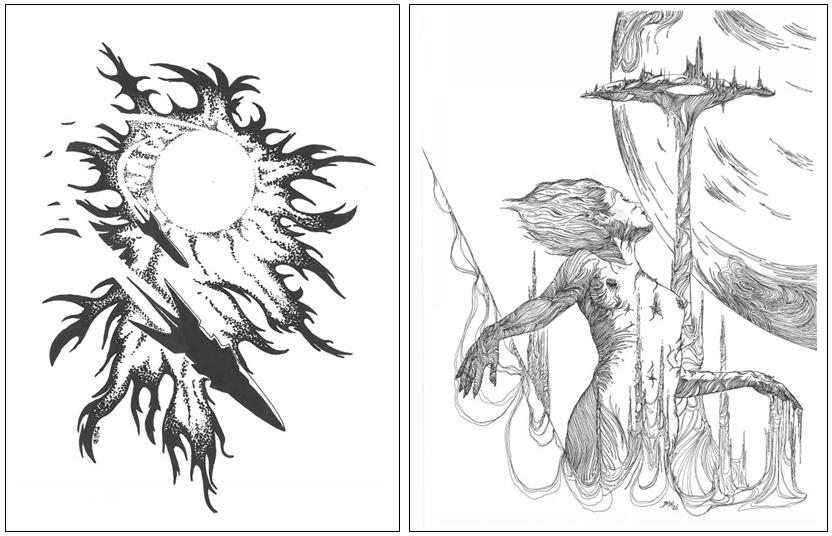
Giuseppe Festino: Caesar, Jacono, Thole; later, Segrelles and Chichoni. But you can’t forget Garonzi, to be placed on the background of the first period.

Luigi Petruzzelli: In that period, I especially like the works by Karel Thole. But when about twenty years ago I tried to paint an SF illustration… but I am not an artist, I did it just for myself, as an experiment when my sister had got some oil colors… well, I copied a Robot cover by Giuseppe Festino. And I told him this many years later, after I had met Giuseppe. Some laughs together
4) How have artistic styles changed over the last thirty, forty years?
Alessandro Bani: From brush to airbrush, to computer graphic. I remain faithful to pencil and pen with India ink.
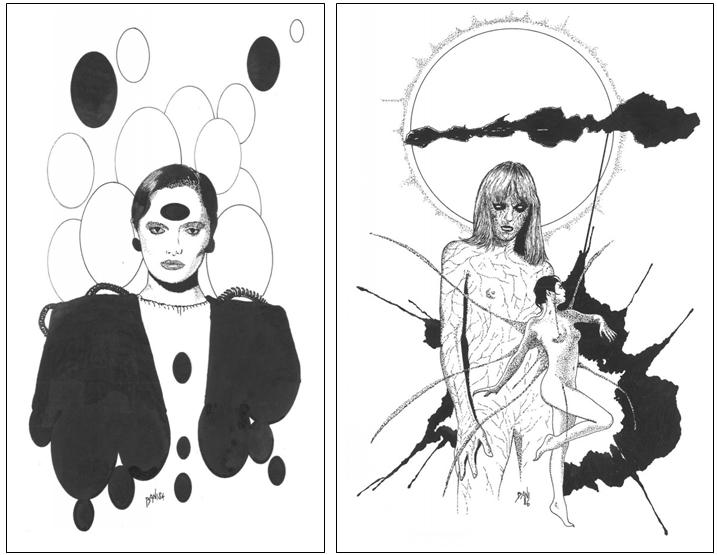
Giuseppe Festino: Besides the themes, the tools have changed from traditional temperas (which got more sophisticated but “cold”, almost synthetic, effects with the airbrush) to acrylics. Everything (or almost everything) was replaced by computer art. But if we want to talk about styles, meaning the artists’ expression and graphic taste, we have seen little originality. Certainly Thole was more personal than who preceded him had been, above all for his irony and the surreal touch he placed in his works. Then it was Chichoni’s turn, whose originality is mostly evident in the kind of thickness he was able to give to his creations. I think that in the US you could know his talent before he came into Europe.
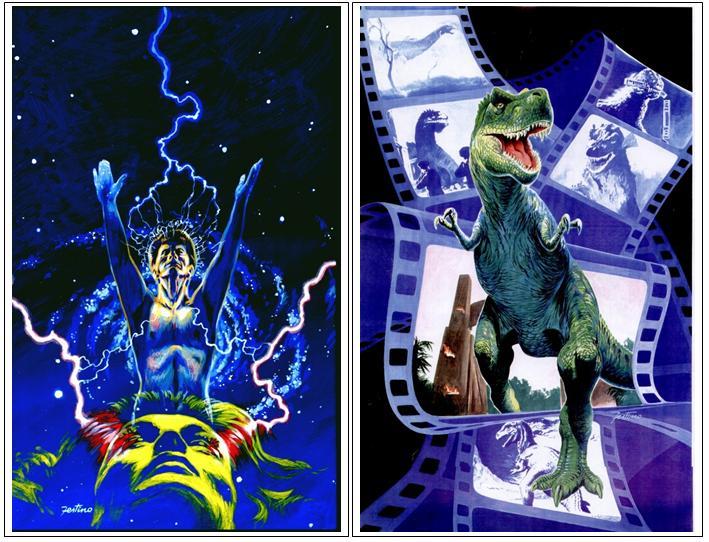
5) Who are your favorite artists? Who has influenced your work the most?
Alessandro Bani: Certainly Virgil Finlay, unquestioned master of pointillism and thin hatch. Karel Thole for composition and illustrations architecture: a wonderful, fantastic, modern surrealist.

Alexa Cesaroni: Frank R. Paul, Maurizio Manzieri, Michael Whelan.

Giuseppe Festino: Personally, Kurt Caesar. Later, Karel Thole. The list containing all those I appreciate would be long. Great American names who worked in our sector, such as Finlay for black and white, Emsh both for drawings and covers, Barlowe for the same reason, many works by Kelly Freas for his “tasty” humor, John Schoenherr for his creativity and the anatomical coherence of his aliens, Whelan and Lehr for their different but very personal dreamlike worlds. And I like a lot the almost-unknown, for most people, Arthur Lidov, for the variety of genres he illustrated (anatomy, SF, covers,…). But I might go on and on with this list.
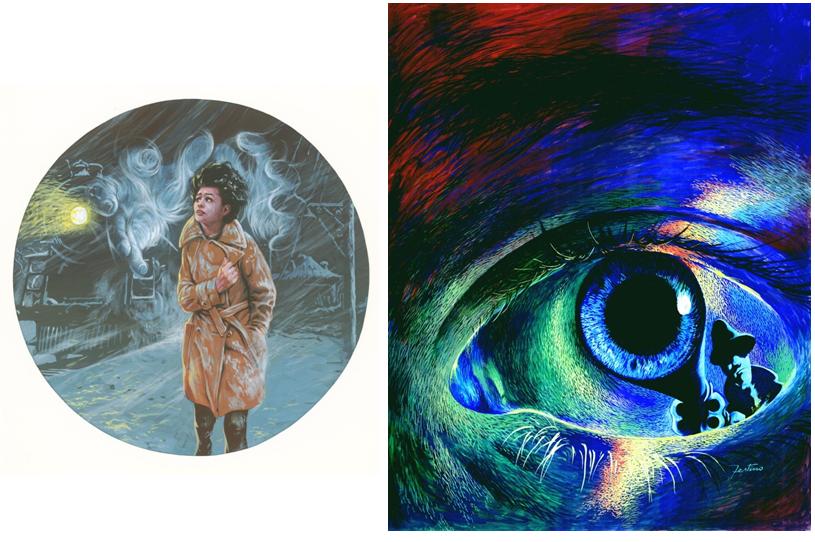
6) What subjects do you most like to illustrate? What is your least favorite subject and why?
Alessandro Bani: My favorite subjects are female figures and monsters representation, sometimes not fully illustrated, often just sketched to be hinted, between shadows. Almost always insidious, never truculent. Often indifferent and elusive. Least favorite: machinery and spaceships, with too technological elements. I don’t like straight lines and cold mechanical details. I love sinuous lines. I love shadows and the women protagonists in their adventures.

Alexa Cesaroni: I like the most representing cosmos, planets, stars, nebulas… Usually I prefer to draw different parts of the story in a single image, as in a dream, with no temporal limits. To emphasize lights and colors. I don’t like too much illustrating battles neither chaotic or violent scenes: I prefer to evoke feelings, sometimes of tension, other times of calm, amazement, mystery.
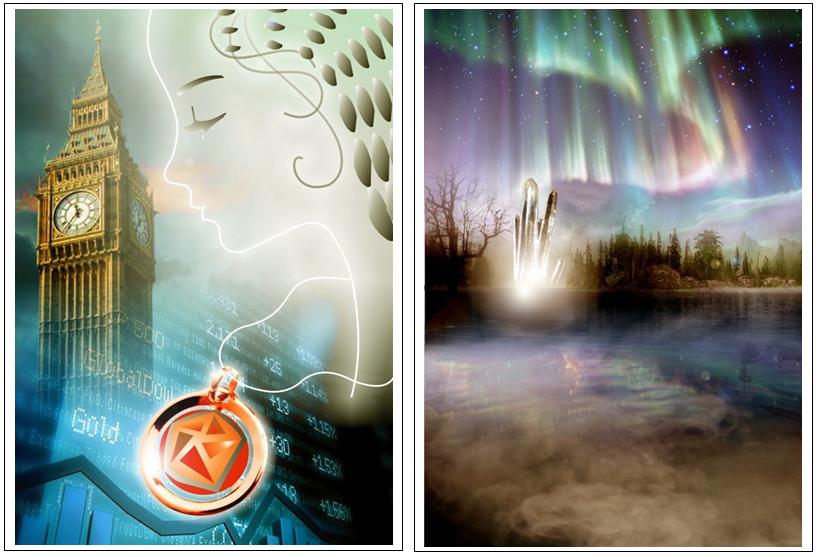
Giuseppe Festino: I like everything. In the SF field, I don’t love too much predominantly technological representation. In the Foss style, just to better explain myself, above all when the human element is not present.

7) How do Italian illustration styles differ with the rest of the world?
Alessandro Bani: I don’t know whether a difference really exists. Of course the American masters have gained a following and have represented a landmark for us, Italian illustrators of the fantastic.

Giuseppe Festino: We should need a long and thorough talk here. Certainly we must admit that Italian illustration had hold the Anglo-Saxon one as a model. The most conservative series demanded this. But some attempts to be original took place. Just an example, among the few ones: the covers by Ferruccio Alessandri for Gamma and Galassia. And the same thing should have happened in France, Spain, Germany and England.
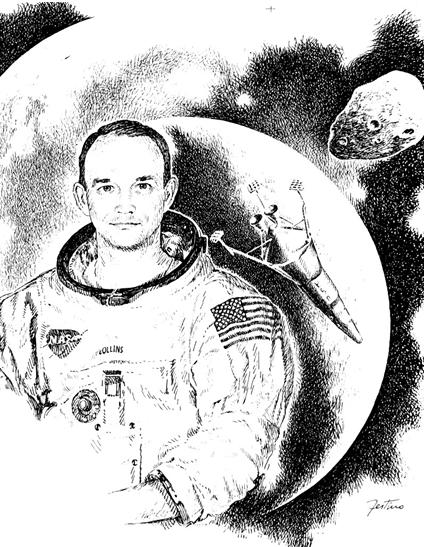
8) Do your dreams end up in your art?
Alessandro Bani: Of course! Mostly in my works not made to illustrate a story, but in those I made in my freedom of expression, even if I used fantastic shapes and themes. I dream a lot. I like to dream, remembering and telling dreams. Often, to fall asleep… I count electric sheep.

Alexa Cesaroni: Yes, in a way, especially what concerns parallel realities, maybe hidden and not at once recognizable, mystery is the most present element in my dreams.
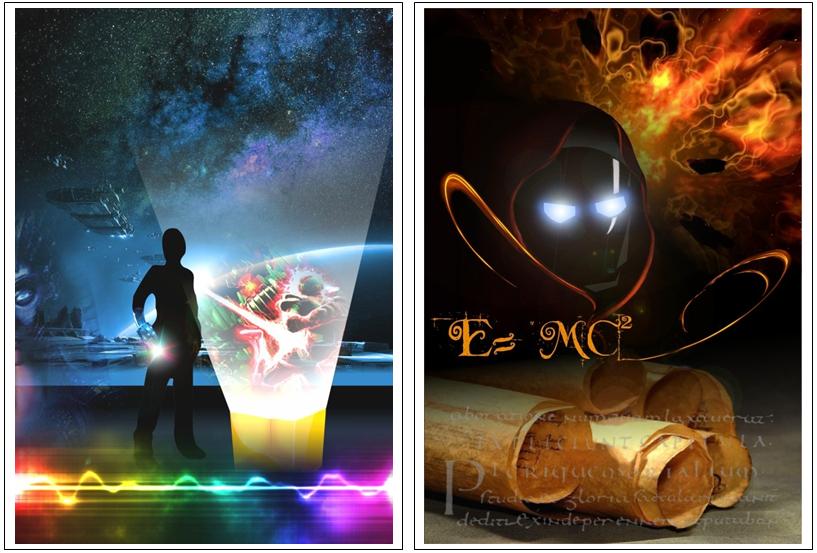
Giuseppe Festino: Sometimes: a couple of times I used them. Even in conceiving tales to tell.

9) How does art impact the future?
Alessandro Bani: With no art, future would be only a projection of the past. Art can influence our view of the future, possible or impossible would it be.
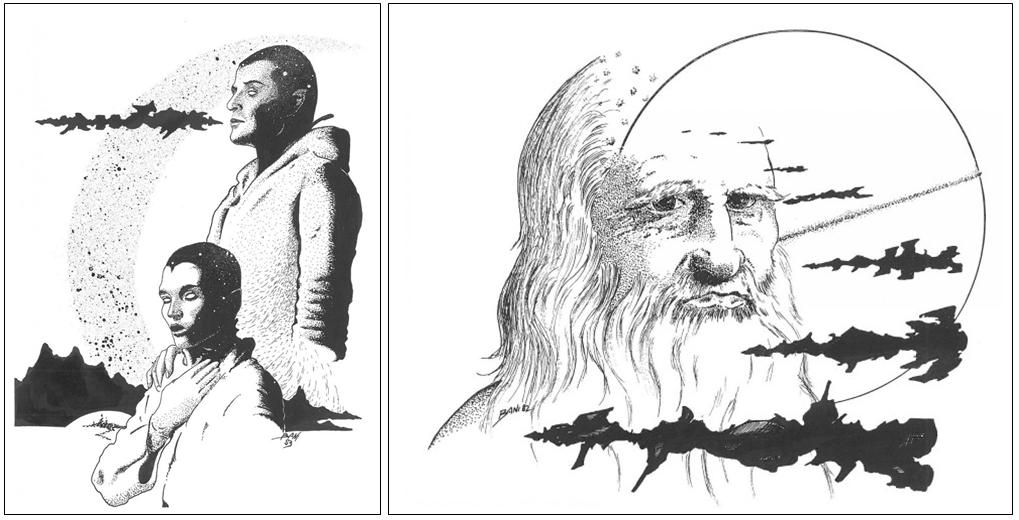
Alexa Cesaroni: The same influence it had in the past and it has nowadays. Of course it is always evolving, not only for the themes but mostly for the representation techniques. Art, meant as an artifice, allows to evoke known and unknown emotions, the imaginative world, the future.
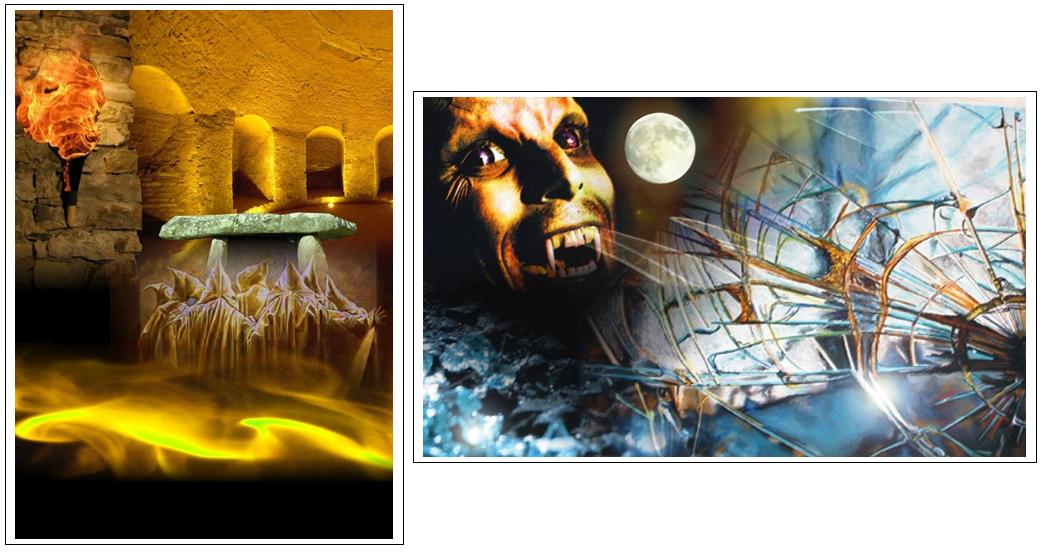
Giuseppe Festino: It is very important, essential, decisive. You can see it in the architectural style in most modern buildings (let’s think about Dubai and other Asian countries, but not only them), in fashion, in the car and shipbuilding industry, to tell nothing about airplanes and all that concerns space exploration. And if the probes going to take photos of the farthest planets or to analyze Martian ground samples look, maybe, funny and just a little “futuristic”, sure they don’t disappoint us as for their efficiency. Anyway, their task is just to give information, not to look stylish and slender in order to make the right impression to Earthmen or aliens.

10) What is the market for SF & F and what challenges do you face?
Alessandro Bani: As of black and white illustrations, which are about the 90% of my production, we are in a period of contraction of publications and publication opportunities. Magazines have closed down or are issued less frequently. The Web may offer some opportunities, but with almost no economical advantage.
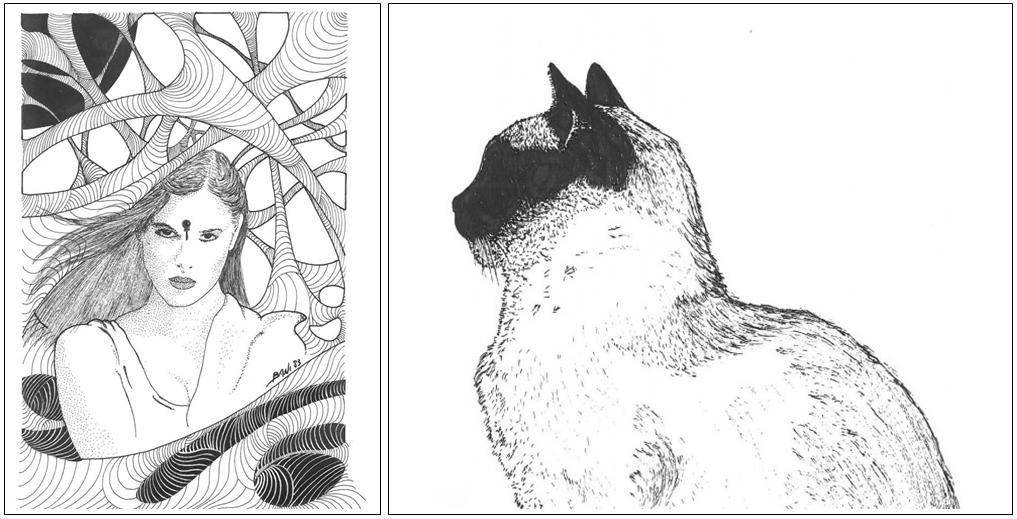
Luigi Petruzzelli: in Italy the SF market is small, and readers – in general, not only in SF – are less and less. Besides, the crisis does not help us.* Challenges: to offer good works with a limited budget, and to persuade bookstores in showing your books (a problem common to most small publishers, and not only for SF&F). Fantasy market is a little better in the general public, but as a niche publisher I have specialized mostly in SF. Not too many readers, but “faithful” ones.
*Luigi explained that when the Italian economic situation becomes increasingly uncertain, many of his readers stop buying books and magazines.
I hope you enjoyed the comments and artwork. I’m sorry about some of the missing titles, but I’m hoping to eventually get them. Luigi tells me that Festino should soon have a book of his illustrations out in the near future. I’ll try to stay in touch and let you in on the good news when that happens.
Since Bani, Cesaroni, and Festino have mentioned a number of artists I’m unfamiliar with, I’m considering another venture into Italian artwork, so stay tuned.
And a warm thanks to Edizioni Della Vigna for their generosity.
Edizioni Della Vigna Art Credits
Vigna Group 01 – Alessandro Bani; SKMBT C45213020910090, SKMBT C45213020910110
Vigna Group 02 – Alexa Cesaroni; Hemma, Calice Alta Qualità
Vigna Group 03 – Alessandro Bani; SKMBT C45213020910111, SKMBT C45213020910112
Vigna Group 04 – Giuseppe Festino; A Chinistrex Fortronza Gli Uomini Sono Macchine, Black-Hole
Vigna Group 05 – Alessandro Bani; SKMBT C45213020910120, SKMBT C45213020910121
Vigna Group 06 – Giuseppe Festino; Casa Carver, Colpo Gobbo
Vigna Group 07 – Alessandro Bani; SKMBT C45213020910122, SKMBT C45213020910123
Vigna Group 08 – Giuseppe Festino; Covera, Jurassic Time
Vigna Group 09 – Alessandro Bani; SKMBT C45213020910130, SKMBT C45213020910131
Vigna Group 10 – Alexa Cesaroni; Fantascienza No Logo, Illo Orologio Veneziano
Vigna Group 11 – Giuseppe Festino; Cover Festino Treno, I Come Innocente
Vigna Group 12 – Alessandro Bani; SKMBT C45213020910140, SKMBT C45213020910141
Vigna Group 13 – Alexa Cesaroni; Imgcop Silverberg No Logo, Interno 2
Vigna Group 14 – Giuseppe Festino; La Stanza Chiusa
Vigna Group 15 – Alessandro Bani; SKMBT C45213020910142, SKMBT C45213020910143
Vigna Group 16 – Giuseppe Festino; Mikeys
Vigna Group 17 – Alessandro Bani; SKMBT C45213020910150, SKMBT C45213020910151
Vigna Group 18 – Alexa Cesaroni; Jake Masters No Logo, Omneignotum Nologo.
Vigna Group 19 – Giuseppe Festino; Silky Dello Spazio
Vigna Group 20 – Alessandro Bani; SKMBT C45213020910152, SKMBT C45213020910160
Vigna Group 21 – Alexa Cesaroni; Uriel 1, Uriel 2
Vigna Group 22 – Giuseppe Festino; Up The Walls Of The World.
Vigna Group 23 – Alessandro Bani; SKMBT C45213020910161, SKMBT C45213020910162












Recent Comments